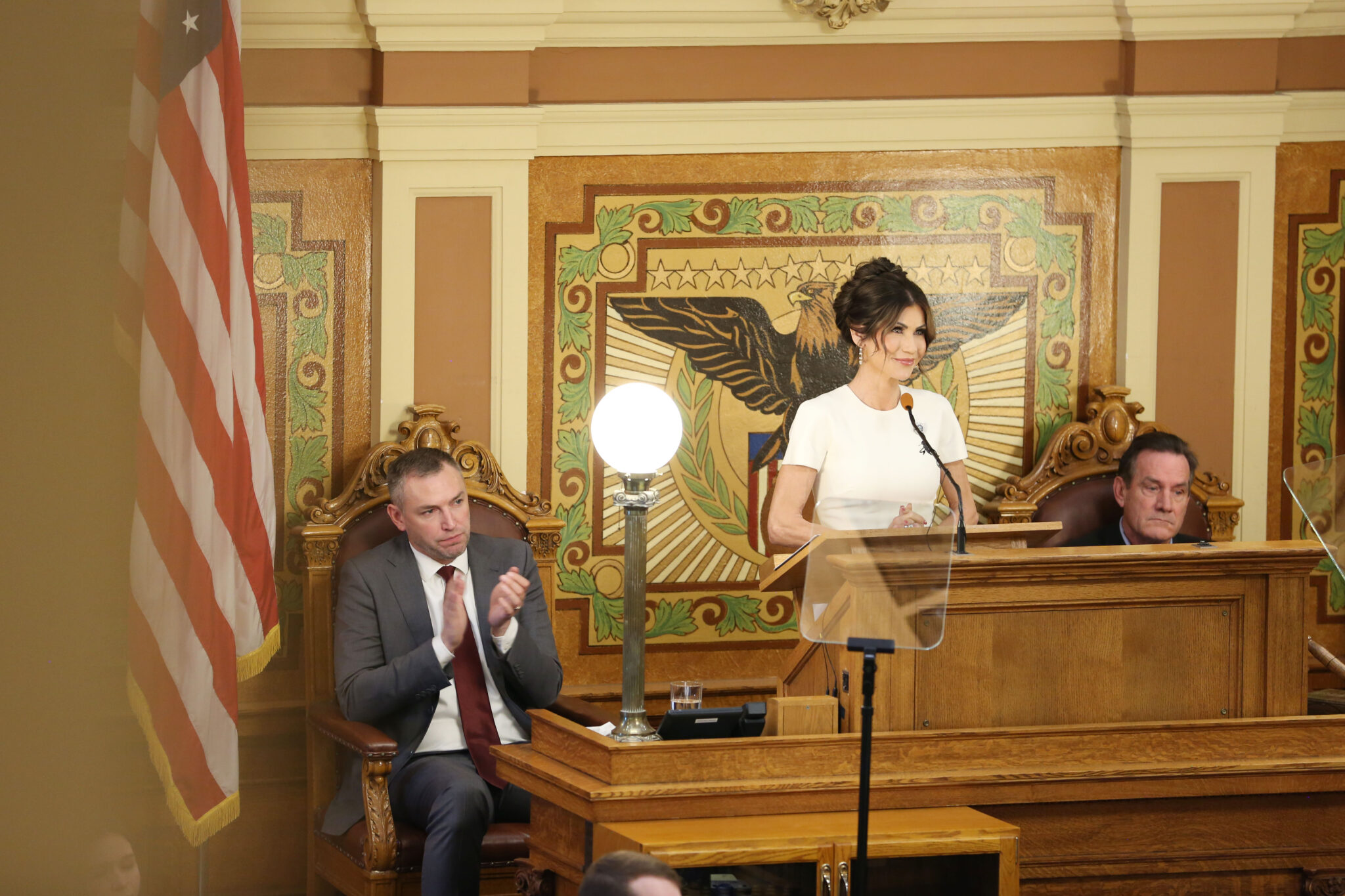Gov. Kristi Noem seems surprised about the amount of state money flowing to public broadcasting.
“South Dakota has the third highest per capita funding of public broadcasting of any state in the nation,” she said during her Dec. 3 budget address.
If she found that shocking, imagine how stunned she’ll be when she finds out it’s her fault.
She approved the last six state budgets, each of which included an increase for South Dakota Public Broadcasting. The organization’s annual state funding went up 27% during that period, from $4.4 million to $5.6 million.
With such a strong record of support, Noem probably should’ve been nominated for a Friend of Public Media award. That’s unlikely to happen now that she’s proposed a 65% reduction, which will slash public broadcasting’s state funding to just under $2 million if legislators go along with the plan.
The organization gets millions in additional support from private fundraising and the federally funded Corporation for Public Broadcasting, but the national funding is tied to state matching dollars. So the national funding would decline along with the state funding, and the resulting staff and programming cuts could leave almost nothing left for donors to support, potentially sending the organization into a death spiral.
Noem also wants to cut other parts of state government. Sales tax revenue is the primary funder of the state budget, and it’s declining, in contradiction to Noem’s claim that South Dakota’s economy is the best in the nation.
Noem budget includes cuts, but also new school choice program and more prison money
Why is Noem targeting public broadcasting for one of the harshest cuts? She devoted only a few sentences to it in her budget speech, including her characterization of per capita funding, which is dubious. According to SDPB, South Dakota is one of eight states where a single, statewide public radio and television operation is housed under one umbrella, rendering comparisons to many other states moot. And SDPB says it has the second-lowest funding in that group of eight.
Setting that aside, it’s clear from Noem’s past statements that she has more than fiscal matters in mind. She was miffed several years ago when SDPB dared to interview scholar and author Ibram X. Kendi after she singled him out for criticism in her campaign against critical race theory.
Noem also declined to participate in a debate on SDPB in 2022. She said it was because of a decision by National Public Radio’s “Morning Edition” to end its traditional Fourth of July reading of the Declaration of Independence. The show replaced it with a segment on historical and modern interpretations of the document’s references to equality.
At the time, Noem described that as evidence that NPR and SDPB, which airs “Morning Edition,” were “drifting further and further to the left” and engaging in a “radical effort to rewrite American history and cancel our Founding Fathers.” SDPB’s Lori Walsh — who conducted the earlier Kendi interview and is a Marine veteran — responded by reading the Declaration of Independence on her “In the Moment” radio show, which apparently didn’t appease Noem.
So it sure looks like the governor has an ideological vendetta against public broadcasting, and she’s taking a last swipe at the organization on her way out the door (she’s President-elect Donald Trump’s nominee to run the Department of Homeland Security).
Ironically, most people who watched or listened to Noem’s criticism of SDPB during her budget address probably saw or heard the speech on SDPB’s radio, television or online platforms. SDPB broadcasts the governor’s budget address and State of the State address every year, along with every committee meeting and floor session of the Legislature. That invaluable work opens up state government to South Dakotans no matter where they live, and it provides a way for media outlets all over the state (including South Dakota Searchlight) to cover state government even on days when they can’t be in Pierre.
GET THE MORNING HEADLINES.
It’s worth noting here that I’m a former employee of SDPB, where I was given the opportunity to work on projects including a documentary and podcast about the 1972 Black Hills Flood — the kind of historically minded project that SDPB is uniquely positioned to support. I also grew up with SDPB, watching “Sesame Street” and “Mister Rogers’ Neighborhood” on an analog television in rural South Dakota where public broadcasting was one of two or three signals our antenna picked up.
Like thousands of other South Dakotans, I value the thoughtful discussion of state issues on SDPB’s “In the Moment” and “South Dakota Focus.” I appreciate the attention and storytelling that SDPB brings to rural communities with “Dakota Life,” and the extensive coverage of the arts and state high school activities that SDPB makes available to everyone free of charge.
Of course, SDPB is in a period of self-reflection like all media. It distributes content on the internet, through a streaming app and on podcast platforms, in addition to broadcasting over the radio and television airwaves. There may come a day when it’s no longer necessary to maintain such a robust network of statewide broadcast towers, and that may come with budgetary adjustments.
But that’s a long-term, strategic discussion requiring leaders with maturity, foresight and thoughtfulness — qualities Noem might have in greater supply if she’d spent more time listening to Fred Rogers and less to Donald Trump.

